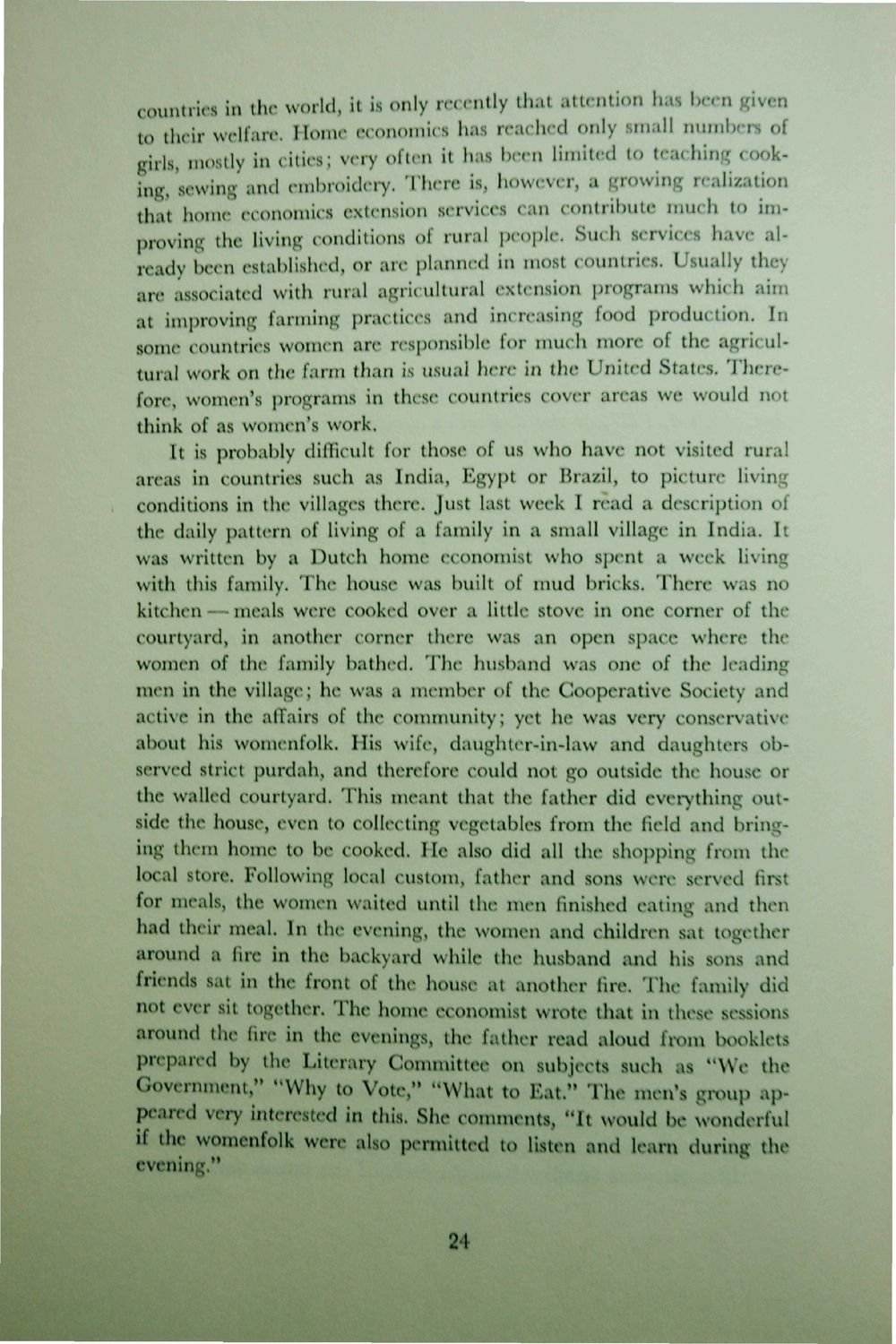| |
| |
Caption: Dedication - Home Economics - Challenge of Home Economics
This is a reduced-resolution page image for fast online browsing.

EXTRACTED TEXT FROM PAGE:
countries in the world, it is only recently that attention hat been given to their welfare. Home economics has reached only small numbers of girls, mostly in cities; very often it has been limited to teaching cooking, sewing and embroidery. There is, however, a growing realization that home economics extension services can contribute much to improving the living conditions of rural people. Such services have already been established, or are planned in most countries. Usually they are associated with rural agricultural extension programs which aim at improving farming practices and increasing food production. In some countries women are responsible for much more of the agricultural work on the farm than is usual here in the United States. Therefore, women's programs in these countries cover areas we would not think of as women's work. It is probably difficult for those of us who have not visited rural areas in countries such as India, Egypt or Brazil, to picture living conditions in the villages there. Just last week I read a description of the daily pattern of living of a family in a small village in India. It was written by a Dutch home economist who spent a week living with this family. The house was built of mud bricks. There was no kitchen — meals were cooked over a little stove in one corner of the courtyard, in another corner there was an open space where the women of the family bathed. The husband was one of the leading men in the village; he was a member of the Cooperative Society and active in the affairs of the community; yet he was very conservative about his womenfolk. His wife, daughter-in-law and daughters observed strict purdah, and therefore could not go outside the house or the walled courtyard. This meant that the father did everything outside the house, even to collecting vegetables from the field and bringing them home to be cooked. He also did all the shopping from the local store. Following local custom, father and sons were served first for meals, the women waited until the men finished eating and then had their meal. In the evening, the women and children sat together around a fire in the backyard while the husband and his sons and friends sat in the front of the house at another fire. The family did not ever sit together. The home economist wrote that in these sessions around the fire in the evenings, the father read aloud from booklets prepared by the Literary Committee on subjects such as "We the Government," "Why to Vote," "What to Eat." The men1! group appeared very interested in this. She comments, "It would be wonderful if the womenfolk were also permitted to listen and learn during the evening." 24
| |